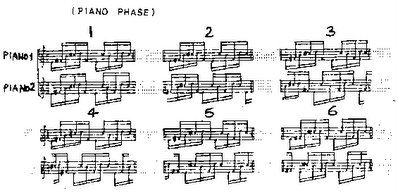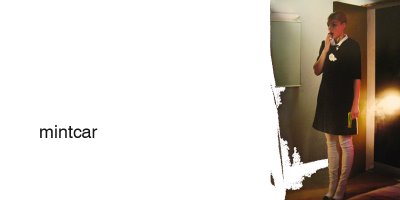
'In the original composition Piano Phase is written for two pianos. The first piano begins with the pattern of twelve tones and the second piano moves in slowly. Shortly after the second piano speeds up, while the first piano holds strictly to the tempo until he is one note ahead, then he holds the tempo in order to assimilate the resulting pattern. This happens twelve times, until both pianists are back in phase. In a second section Reich introduces a new eight note pattern, to which the second piano plays a pattern which is not the same but similar in harmony and the phasing takes place once again. The four middle tones of this pattern are used for the third and last phase. Again the phasing process takes place and the pianists end together quite abruptly.' (from)
wanna try?

6 comments:
yes please! where can we find two pianos?
oh, germans. only you would come up with the phrase "Phasenverschiebungsprozeß".
secret to success: eliminate the spaces, make it tighter.
that reminds me of this: http://news.bbc.co.uk/1/hi/magazine/4248494.stm
andrea do you know if the music building has rooms with 2 pianos? (morrison, or the scaley building?)
hmm!
i can't remember! i know that there are certain practice rooms within morrison (usually reserved for music majors or for chamber groups) that are bigger. those might have 2 pianos. they ought to.
the scaley building is library only!
give it a shot; let me know of your success. i'll let you know, too, when i get the chance.
(i thought i might have had a shot with the scaley building, because i once went to the lower level and found a silent room with rows and rows of people playing synthesizers, listening on their headphones. it was so bizarre, but not.)
thanks again, andrea.
Post a Comment